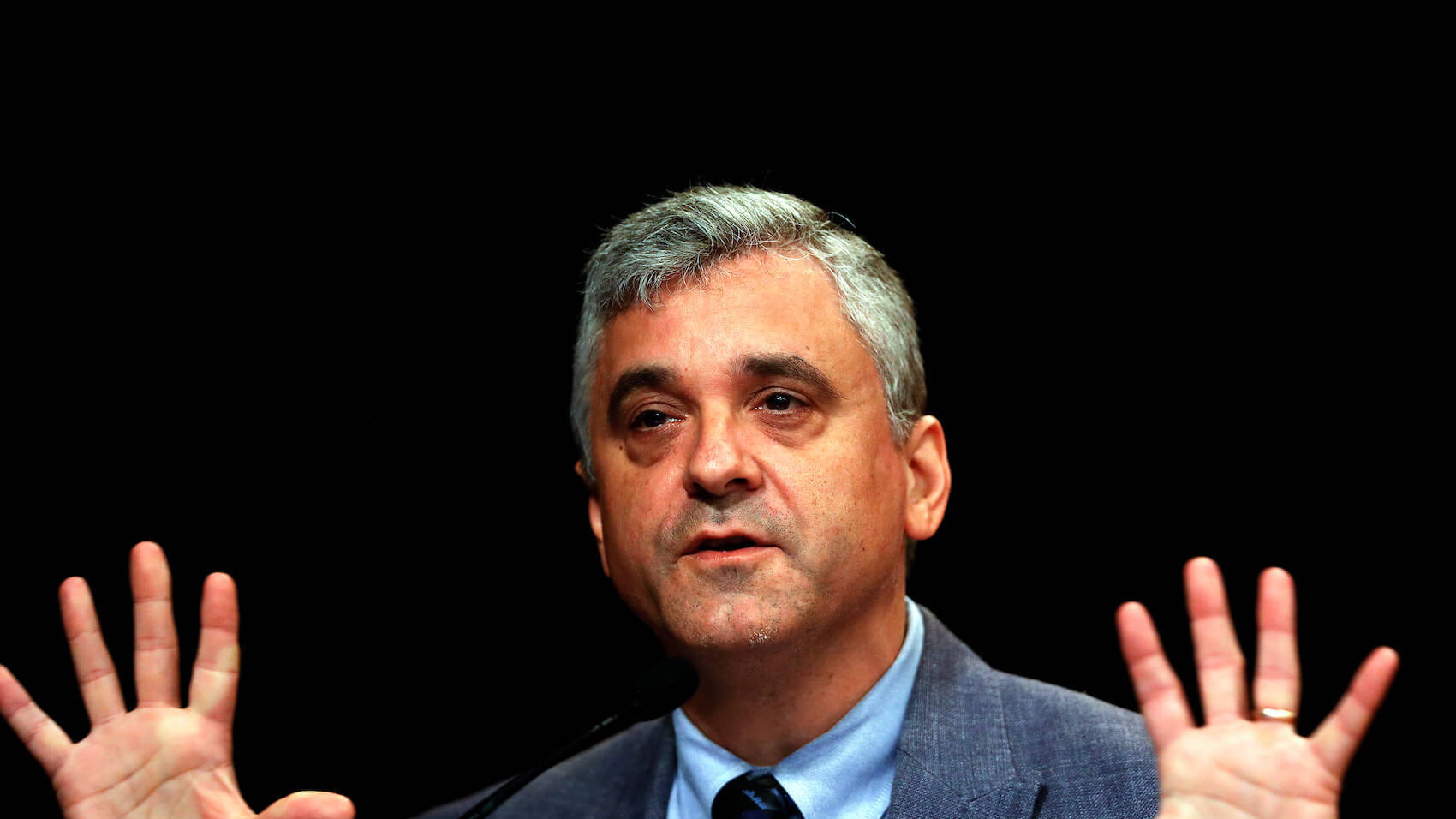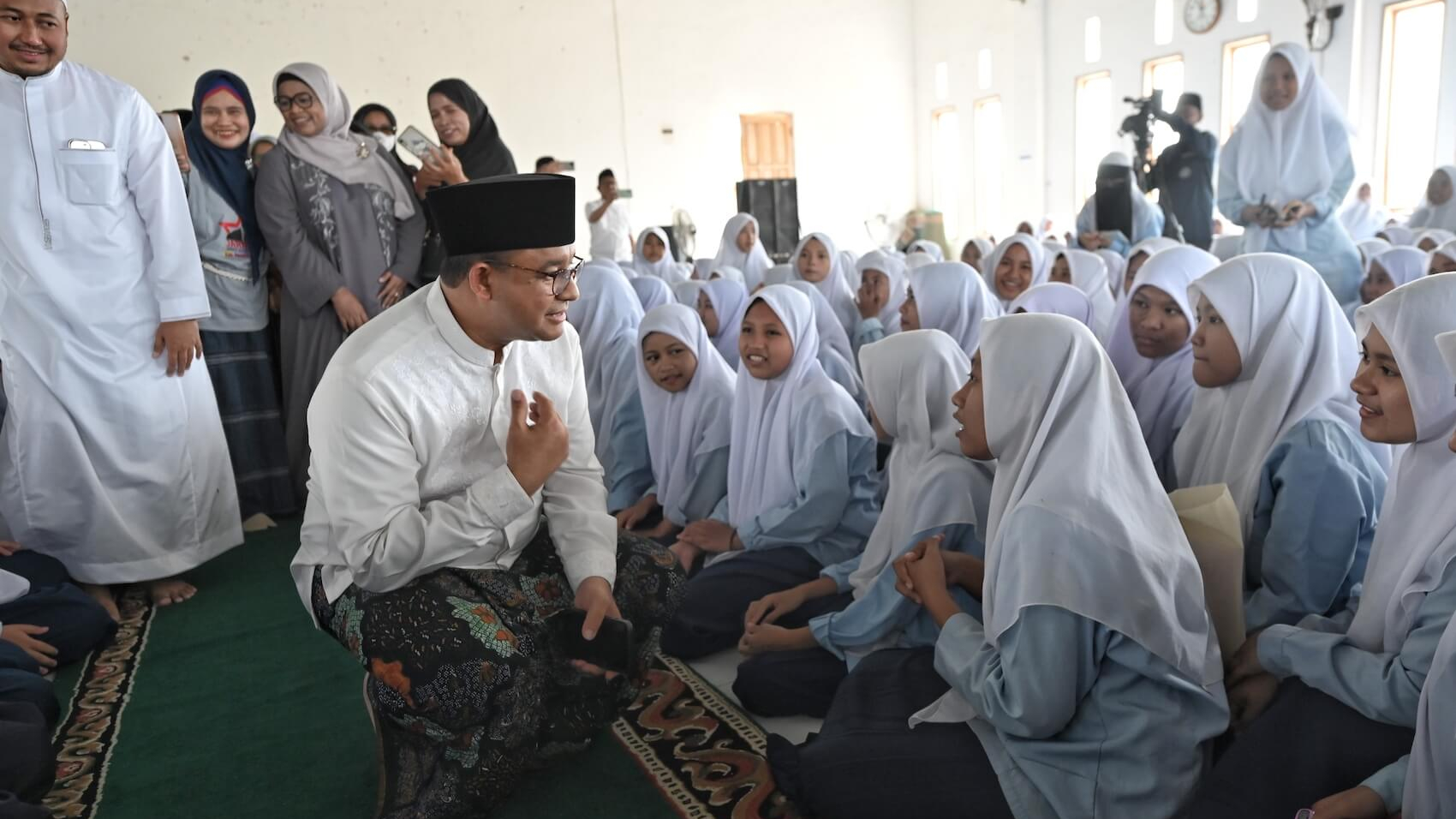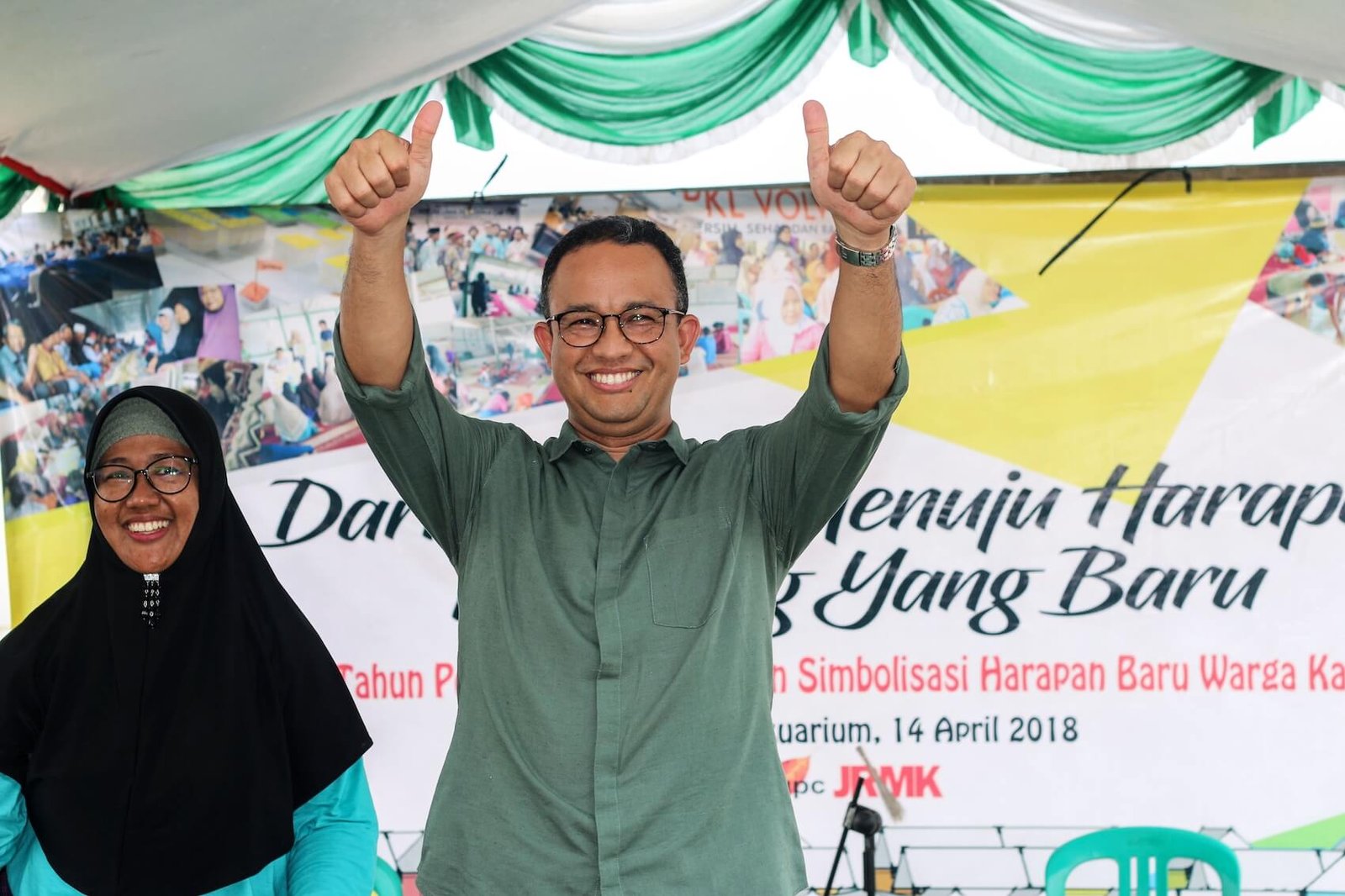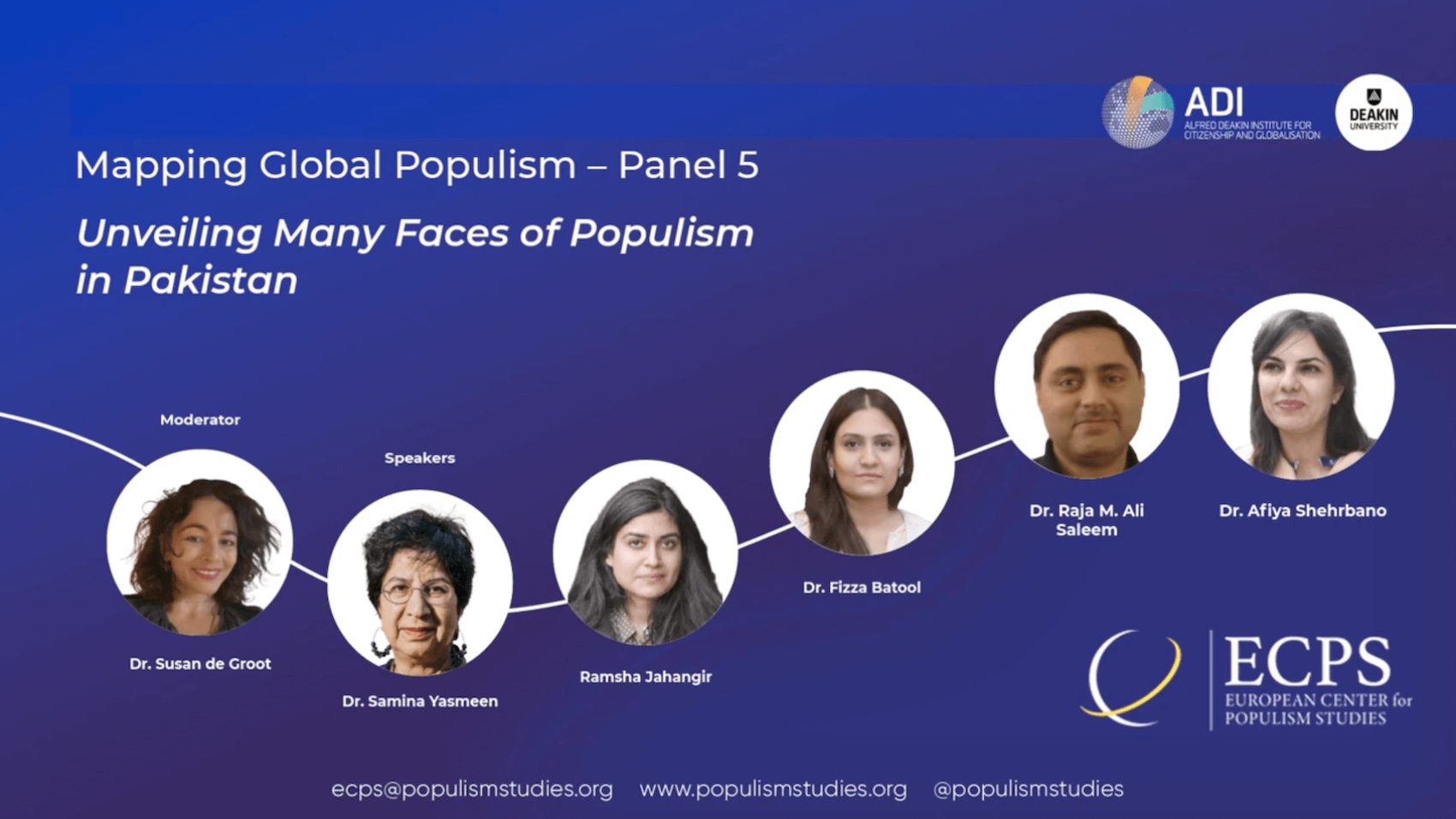“This process of a declining Liberal West, along with its increasing inability and unwillingness to promote democracy, presents a significant challenge in the world. Unfortunately, I don’t believe we can return to the world of 1990 to 2003 when democracy was, in many respects, almost the only game in town. Those days are over, and we now face a much more complex and challenging world,” says Professor Steven R. Levitsky.
Interview by Selcuk Gultasli
Dr. Steven R. Levitsky, the David Rockefeller Professor of Latin American Studies and Professor of Government at Harvard University, stated that “the process of a declining Liberal West, along with its increasing inability and unwillingness to promote democracy, presents a significant challenge in the world.” In an exclusive interview with the European Center for Populism Studies (ECPS), Professor Levitsky analyzed the state of liberal democracy worldwide, saying, “Unfortunately, I don’t believe we can return to the world of 1990 to 2003 when democracy was, in many respects, almost the only game in town. Those days are over, and we now face a much more complex and challenging world.”
Primarily discussing the article jointly written by him and Professor Lucan A. Way for the Journal of Democracy on October 4, 2023, titled “Democracy’s Surprising Resilience,” where they emphasize that authoritarianism has a hard time consolidating power in countries with weak states, Levitsky argues that democracy promoters exaggerate democratic backsliding and criticizes those scholars for doing so because they want to highlight the degree of autocratization in the world. “I’m concerned that there has been an almost a rush to declare the world in a democratic recession, with an excessive focus on cases of backsliding, which are undoubtedly real. But they’re not the only thing happening in the world… Our assessment indicates modest backsliding over the last 15 years, rather than dramatic backsliding,” underlined Dr. Levitsky.
Here is the transcription of the interview with Professor Steven R. Levitsky with minor edits.
“The Record of Democracy Is Actually Quite Impressive”
The first question is about Hungarian Prime Minister Viktor Orban and the leader of PiS in Poland, Mr. Kaczynski, who have been shaping their versions of illiberal democracies for over a decade. With Italy governed by the far-right-winger Georgia Meloni, Slovakian populist Robert Fico scoring a victory in recent election, and the far-right Alternative for Germany (AfD) party rising fast in the polls, the signal is that right-wing populism is gaining strength across Europe. Do you not see a looming danger for democracies in Europe?
Steven R. Levitsky: It’s important to note that among the cases you’ve listed, only one could be argued to have seen a significant breakdown of democracy, which is Hungary. Poland has experienced some democratic backsliding, and there is a very competitive election next week in which PiS could find itself without a majority. It is not as if democracy has been extinguished in Poland.
In the other cases, Robert Fico governed for four years in Slovakia without breaking democracy, and he won 23 percent of the vote and needs to form a coalition. So, it is not like seeing a Hugo Chavez-style takeover in Slovakia. In Italy, I don’t like the Brotherhood, and there is obviously much to worry about. However, it’s a coalition government that doesn’t pose an immediate threat to democracy.
The far-right is pretty illiberal in Europe, and of course, there is much to worry about. But in terms of democracy breaking down, the record is actually quite impressive. The only place in all the list that you just named, where democracy is arguably broken down is Hungary. So, my main point is, there’s a difference between being worried about a changing scenario and declaring that democracy is breaking down. We need to be clear about that difference.
Despite the arguments presented in your article, “Democracy’s Surprising Resilience,” we are witnessing the rise of far-right populism in almost every European country. How do you explain this rise of populism in Europe, given the terrible historical experiences with leaders like Hitler, Mussolini, and Stalin?
Steven R. Levitsky: First of all, I am not an expert on far-right populism in Europe. I primarily study political parties in Argentina; I’m a Latin Americanist. I think there are pretty good, persuasive explanations suggesting that a combination of economic anxiety resulting from the 2008-2009 financial crisis and broader economic changes globally, coupled with the increasing ethnic diversity brought about by migration, has generated reactions among segments of the electorate, particularly among non-college-educated, rural, white Christian sectors in Europe. This phenomenon has occurred across the industrialized world, including the United States.
In various places, typically between 15 and 30 percent of the electorate, which is often non-college-educated, residing in small towns, more frequently male, and predominantly white, has supported right-wing populist parties. However, this doesn’t necessarily mean that fascism is imminent. Most far-right parties in Europe, while certainly holding illiberal views, have, for the most part, adhered to democratic norms. Golden Dawn in Greece is a significant exception. Therefore, we should be cautious about jumping from the rise of far-right parties to declaring an immediate threat to democracy, let alone the imminent arrival of fascism in the region. Frankly, I don’t see that on the horizon.
As a Turk, I would like to ask: You list Turkey as one of the three well-known backsliders, along with Hungary and Venezuela. President Recep Tayyip Erdogan has recently announced his desire to draft a new constitution, and most pundits believe this desire stems from his wish to be re-elected for a third term, which is currently prohibited by the existing constitution. Do you foresee any danger to Turkish democracy if Erdogan succeeds in being elected for a third term?
Steven R. Levitsky: The danger to Turkish democracy is already present. Turkey hasn’t been a democracy for very long. Prior to the late 1990s, military power and restrictions on religious parties made Turkey less than democratic. It briefly achieved full democracy in the early 2000s during the early years of the AKP. However, democratic backsliding began in the first decade of the 21st century and escalated significantly after the failed coup attempt in 2016. Today, Turkey can be characterized as a competitive authoritarian regime, with Erdogan acting as an autocrat.
(However) he has not fully consolidated authoritarian rule, and it doesn’t surprise me that he is continuing to try to perpetuate himself in power. What’s interesting feature of Turkey is the degree of democratic pushback and Erdogan’s inability to prevent the opposition from winning power in the major cities even in elections with tilted playing fields that Erdogan had created. I have a very smart former graduate student who tells me if the opposition had nominated the mayor of Istanbul as its candidate, it probably would have won the recent election although Erdogan would almost certainly have tried many shenanigans to try to stay in power. There’s a good chance that Erdogan would have had to cede power. So, on the one hand, Turkey is a competitive authoritarian regime and on the other hand, the democratic pushback is such that elections remain really competitive. So, I don’t think the question is well framed in saying there’s a danger to Turkish democracy. The danger’s been there a long time and Turkey is not a democracy. But I think that the opposition stands as good a chance as of removing Erdogan in the coming years. It’s a pretty sort of evenly matched battle between an autocratic President and a pretty robust opposition.
“American Democracy Is Heading for Some Rough Times”
Turning to the United States, Professor Levitsky, if Donald Trump is re-elected in the US, what kind of strains do you anticipate for democracies worldwide? After Speaker Kevin McCarthy was ousted by the far-right Republicans, what do you foresee for American democracy?
Steven R. Levitsky: American democracy is heading for some rough times. Given the strength of opposition forces, I find it highly unlikely that we will witness the consolidation of an autocracy in the United States, akin to Russia or even Hungary. However, it’s very probable that we will observe what we used to call an unconsolidated democracy—a very unstable regime teetering on the brink of constitutional crises and possibly experiencing periods of weak authoritarianism. I wouldn’t be surprised to see a considerable amount of political violence, considering the level of extremism and the prevalence of firearms in the country.
The most significant problem lies with the Republican Party, which has largely abandoned democratic rules of the game. We see this in its willingness to continue supporting Donald Trump, even though he attempted to overturn the results of an election. If Trump wins, the US will undoubtedly slide into another democratic crisis, with the possibility of an authoritarian attempt. This time, it could be much more severe than before because Trump didn’t anticipate becoming President previously. He didn’t have a comprehensive plan for purging and packing the state as Erdogan and Orban did. However, if he succeeds this time, he will likely make a much more concerted effort to purge state institutions, pack them (with loyalists), and politicize them—similar to what we’ve seen in other cases of elected authoritarianism.
Such a scenario would send a terrible signal and have a detrimental impact on democracies worldwide. We’ve already witnessed this between 2016 and 2021 in countries like El Salvador, Honduras, and even Nicaragua, where autocrats perceived autocratization processes as tacit approval, not being opposed by the United States. Emerging autocrats, feeling emboldened by Trump’s actions, started copying his style by attacking the press and denying election results, which closely followed Trump’s rejection of the election outcome. Similar copycat efforts emerged in Peru and Brazil.
What transpires in the United States has global implications in two ways. First, people worldwide look at the United States as a model, so if it’s acceptable to be an autocrat in the United States, it will embolden autocrats elsewhere. Second, US foreign policy will change. While the Biden Administration could do more to promote democracy, it has at least been relatively active behind the scenes in opposing autocratic behavior. For example, we saw this in Guatemala recently and in Brazil after the election, where the Biden Administration pressured autocratic forces to step back. If Trump regains office, these efforts will likely diminish, and there may even be open support for autocrats in some cases. Consequently, a Trump re-election would have profoundly negative consequences for democracy worldwide.
May Weak State Institutions Be a Chance?
How does the presence of weak state institutions in low- or middle-income countries with authoritarian tendencies hinder the consolidation of authoritarian rule? Can you explain the role of these same weak state institutions, which have been observed as key factors contributing to insufficient democratic resilience against authoritarianism in cases like Turkey, Serbia, and Hungary, in contrast to the cases of the US and Brazil?
Steven R. Levitsky: Well, Turkey doesn’t have such weak institutions. Turkey possesses relatively strong institutions. Hungary also boasts quite robust institutions. When I refer to weak institutions, I’m mentioning countries like Ukraine, Albania, Benin, Honduras, Zambia, and Malawi. These are countries with weak state institutions. Turkey and Hungary, on the other hand, have relatively strong institutions. Serbia has slightly weaker institutions but is not excessively weak either. When we discuss the failure of democracies and the third wave of democracies, we have extended electoral politics to places where democracy had never previously existed, and where sustaining it is quite challenging. These are very poor countries, marked by high levels of inequality and very weak state institutions, such as Nicaragua, Benin, Albania, Mali, and Malawi. These are nations where almost every existing social science theory would predict that democracy would have a hard time to survive. Indeed, democracy has had hard time in such countries. However, the point we emphasize in the article is that authoritarianism has a hard time in consolidating power in countries with weak states, primarily for two reasons.
First of all, where the state is weak, governments have a hard time getting state officials to do what they want them to do so. That’s a problem for democracies, because democratic governments have a hard time implementing, enforcing their policies and providing public goods. But it’s problematic for autocrats, too. Because, when they want to steal an election, for example, they have a hard time getting bureaucrats and low-level state officials to go along with them. Similarly, when they want to repress or spy on opponents, they have a hard time getting state institutions to go along with them. We’ve seen that notoriously, for example, in Ukraine where, as my co-author Lucan Ahmad Way has shown, autocrats repeatedly have failed to consolidate power. I’m talking about people like Yanukovych, precisely because they couldn’t get the state to go along. So, when the state is weak, autocrats have a hard time enforcing their power.
Secondly, weak states result in poor governance. Governments govern ineffectively when state institutions are weak, and they have trouble ensuring security and implementing policies that matter to people. So, what does it mean for autocrats? It means that autocrats become unpopular. It means people turn against autocratic governments in the same way that they turn against democratic governments in response to poor performance. As long as elections are held, autocrats are going to have hard time to secure victory in countries with weak institutions. We have witnessed this trend in countries like Sri Lanka, Nepal, Honduras, Peru, Ecuador, Bolivia, Ukraine, Zambia, and Malawi. Governments leaning towards autocracy fail, lose elections, and even lose unfair elections because people are dissatisfied with the government’s poor performance. This poor performance is rooted in the weakness of state institutions. Therefore, while democracy remains vulnerable in lower and middle-income countries, particularly those without significant oil resources, autocracies also prove vulnerable in many of these nations. Autocratic regimes often last for about 7-10 years before they collapse.
You have extensively analyzed the influence of internal factors and the general international political climate on democratic backsliding and democratic resilience. Do you believe that the well-coordinated efforts of authoritarian states such as Russia, China, and Iran to export their authoritarian or illiberal governance style through various economic, political, diplomatic, and technological means and projects play a significant role in these processes?
Steven R. Levitsky: I believe that the claim you just made is overstated. I don’t think there is much effective coordination among China, Russia, and Iran. These are three very different states with distinct interests and activities. While it’s true that all these states oppose the Liberal West and seek to counterbalance the power of the United States, they do work together at times and share an interest in limiting and thwarting US power. There’s no question about that and they have at times supported autocratic governments, but they’re not particularly well coordinated. They’re not particularly affective. Russia, in particular, has largely failed in its efforts, even in neighboring countries like Ukraine or Georgia, to prop up authoritarian allies.
Nonetheless, I completely agree with an element of your argument, which is that there is shift in the global balance of power away from US and European hegemony in the 1990s towards a more multi-polar world, in which the US and Europe are weaker and less influential, China and Russia and other powers are more powerful, pose a significant challenge for democracy. This shift limits the US’ willingness and ability to promote democracy in the global South and almost certainly will lead to some erosion of global democracy. However, it’s important not to overstate the extent of coordination among these states. Despite the substantial geopolitical changes that have been unfavorable to liberal democracy, we have only seen a relatively modest decrease in the number of democracies, namely 5-6 fewer democracies that we had 15 years ago. So, while it’s a real threat, we should be cautious not to overstate it, and the actual consequences of this threat have been surprisingly limited thus far.
“Democracy Promoters Exaggerate the Degree of Autocratization in the World”
Is it possible that the experience of democratic backsliding is different in various contexts? A small change in data might have a more significant local and global impact in certain geographic regions. So, even though the data shows resilience, is it possible that the experience of civilians in everyday life has changed catastrophically?
Steven R. Levitsky: Yes, it is possible. However, the term “catastrophically” may be an overstatement. To persuade me, you would need to provide evidence of catastrophic changes. Nevertheless, it is possible that the situation is worse than the data suggests. I believe we should begin with the data and address my critique of many democracy promoters, particularly V-Dem, in recent years. They have tended to overstate the case. For instance, V-Dem previously classified India as an electoral autocracy. I think they made this change in 2017 or 2019. Before that, they focused on the number of democracies and downplayed per capita figures, i.e., the number of people in the world living under democracy. However, when India shifted to electoral autocracy, V-Dem began emphasizing per capita numbers. Why are they doing that? They’re doing that because they want to highlight and even exaggerate the degree of autocratization in the world. We need to exercise caution and balance when interpreting the data. I’m concerned that there has been an almost rush to declare the world in a democratic recession, with excessive focus on cases of backsliding, which are undoubtedly real. But they’re not the only thing happening in the world. To answer your question, yes, it is possible that the situation may be worse than the data suggests. However, we should approach the data in a serious and balanced manner. Our assessment indicates modest backsliding over the last 15 years, rather than dramatic backsliding.
You suggest that if wealth, education, and urbanization continue to grow, authoritarian vulnerabilities may intensify. However, we have observed a different outcome in both the Russian and Chinese contexts, as well as in regimes supported by them. Could these cases be considered exceptions to the general trend you have discussed?
Steven R. Levitsky: When evaluating regimes, I consider their capacity to monopolize resources and control society. I’ve written a book arguing that regimes born of violent revolution, like China, tend to be very durable. It has also been shown that regimes sustaining high levels of economic growth (while China’s economy has changed, it remains a reasonably strong performer) are likely to survive. Revolutionary regimes overseeing economic growth, such as Vietnam and China, are in relatively good shape in the medium term.
Regimes with abundant energy resources, like oil and gas, as in the case of Russia, are also likely to be in good shape because they can monopolize resources, countering the impact of modernization. In Russia, despite it being a relatively wealthy and a relatively educated country, civil society is incredibly weak due to state control over many resources. Thus, Russia and China are relatively easily explained. Our focus is primarily on countries in Africa, Asia, and Latin America, where urbanization and transitioning into lower-middle-income status are occurring. They are no longer considered poor. Some countries like Burundi and Mali remain very poor. However, countries like Kenya, Senegal, Ghana, and others are experiencing significant modernization, which makes autocratization more difficult.
In Central Europe, Southern Europe, and South America, we see countries graduating into upper-middle-income status with large civil societies, developed private sectors, and robust opposition. This doesn’t make authoritarianism impossible, but it makes it much less likely. In these regions, despite some autocratization, the conditions make it much harder for authoritarian rule to solidify.
We’re seeing in Central Europe, Southern Europe and in South America the graduation of countries into sort of upper middle-income status with large civil societies, developed private sectors and robust opposition that doesn’t make authoritarianism impossible, but it makes it much less likely.
In the cases of South America, Central Europe, and Southern Europe, autocratization is evident primarily in Venezuela, which has abundant oil resources, and Hungary, which is a real outlier. Hungary is a case that theory predicts should not be an autocracy. The fact that the regime doesn’t lock up anybody, doesn’t kill anybody, doesn’t ban anybody and the fact that elections are still competitive suggest that this regime also may not consolidate long-term.
There are valid reasons why China and Russia are authoritarian, and we are not predicting global democratization in the short or medium term. Especially in countries with highly statist economies, impoverished societies, or revolutionary legacies, there are valid reasons to expect stable authoritarianism. However, in much of the world, from the Baltics to Central Europe, South America to parts of East Asia, levels of economic development provide democrats with a fighting chance in many more places than during the beginning of the third wave of democratization.
Lastly, in your famous book “How Democracies Die,” you wrote, “The 1990-2015 period was easily the most democratic quarter-century in world history—partly because Western powers broadly supported democracy. That may now be changing.” Do you still think so? How is that change unfolding?
Steven R. Levitsky: Unfortunately, but inevitably, the Western dominance of the initial third wave period—the extraordinary liberal Western hegemony from the fall of the Berlin Wall or perhaps even the era of Perestroika to the Iraq War, spanning the first decade of the 21st century—that era, the extraordinary liberty of 1989 to 2003 is gone, it is eroding, and will continue to erode. Both the United States and Europe, especially the United States, have accelerated the decline of Western liberalism through their own errors, internal conflicts, and strife. US democracy has become almost dysfunctional, making it extremely difficult to promote or defend liberal democracy globally.
This process of a declining Liberal West, along with its increasing inability and unwillingness to promote democracy, presents a significant challenge in the world. Unfortunately, I don’t believe we can return to the world of 1990 to 2003 when democracy was, in many respects, almost the only game in town. Those days are over, and we now face a much more complex and challenging world.

















